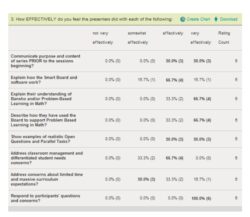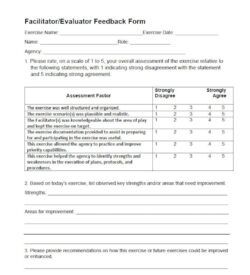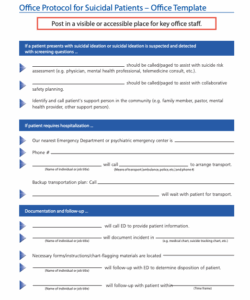Ever wondered if that last training session truly hit the mark? Perhaps you invested time and resources into developing your team’s skills, but how do you really know if the effort paid off? This is where a robust training evaluation comes into play, offering invaluable insights into the effectiveness of your learning programs. It’s not just about ticking a box; it’s about understanding what worked, what didn’t, and how to make future sessions even better for everyone involved.
Without proper evaluation, training initiatives can feel like a shot in the dark. You might be guessing at their impact, rather than knowing it for sure. That’s why having a structured approach, like using a well-designed training evaluation sample survey template, is absolutely essential. It provides a consistent framework to gather feedback, measure outcomes, and ultimately, demonstrate the value of your learning and development efforts. Let’s explore how you can leverage such a template to elevate your training programs.
Why Training Evaluation Matters (And How a Template Helps)
Training evaluation isn’t just an optional extra; it’s a critical component of any successful learning and development strategy. It helps you assess whether participants acquired the intended knowledge and skills, if the training content was relevant and engaging, and most importantly, if it led to a positive change in job performance or organizational outcomes. Without this feedback loop, you might unknowingly be repeating mistakes or missing opportunities to optimize your offerings.
The beauty of using a training evaluation sample survey template lies in its efficiency and consistency. Instead of starting from scratch every time, which can be time-consuming and lead to inconsistent data, a template provides a ready-to-use foundation. You can quickly deploy it, ensuring that you’re asking the right questions in a standardized format, making it much easier to compare results across different training sessions or over time. This standardization is key for identifying trends and making data-driven decisions.
Moreover, effective evaluation helps justify the investment in training. By demonstrating tangible improvements or meeting specific objectives, you can show stakeholders the return on investment (ROI) of your programs. It also empowers learners by giving them a voice, allowing them to provide feedback that directly contributes to the improvement of their future learning experiences. It fosters a culture of continuous improvement, where every training session is an opportunity to learn and grow, not just for the participants, but for the trainers and organizers as well.
A comprehensive template usually covers various aspects of the training experience, moving beyond just simple satisfaction. It delves into the practical application of learning, the effectiveness of the instructor, and the overall learning environment. By gathering diverse feedback, you get a holistic view of the training’s impact.
Components of an Effective Training Evaluation Survey
- **Pre-Training Expectations:** Did the training meet what participants hoped to gain?
- **Content Relevance and Quality:** Was the information presented useful, up-to-date, and well-organized?
- **Instructor Effectiveness:** How well did the trainer facilitate learning, answer questions, and engage the audience?
- **Learning Environment:** Was the location, timing, and resources conducive to learning?
- **Overall Satisfaction:** A general rating of the participant’s experience.
- **Applicability to Job:** How likely are participants to apply what they learned in their day-to-day tasks?
- **Future Training Needs:** What other topics or skills would participants like to see covered in future sessions?
Crafting Your Own Training Evaluation Sample Survey Template
While a sample template provides a fantastic starting point, the most effective evaluations are those tailored to your specific training program and organizational goals. Think about what unique outcomes you expect from a particular training. Are you aiming for improved technical skills, better communication, or perhaps enhanced problem-solving abilities? Your template should reflect these specific objectives with targeted questions that truly measure the desired impact.
When you’re building out or customizing your training evaluation sample survey template, consider using a mix of question types. Likert scale questions (e.g., “Strongly Agree” to “Strongly Disagree”) are great for quantitative data, allowing for easy analysis and comparison. However, don’t shy away from open-ended questions. These qualitative responses provide rich, nuanced feedback that can uncover unexpected insights, highlight specific issues, or suggest innovative improvements you might not have considered.
Think about the timing of your survey. Immediate post-training feedback is useful for capturing initial reactions and assessing the training delivery itself. However, to gauge the true impact and application of learning, consider follow-up surveys a few weeks or even months after the training. This allows you to see if participants are actually applying their new skills and if the training has led to sustained behavioral changes or performance improvements in their roles.
Finally, remember that the purpose of collecting feedback is to act on it. Once you’ve gathered responses from your training evaluation sample survey template, dedicate time to analyze the data thoroughly. Look for patterns, identify areas of strength, and pinpoint opportunities for improvement. Share the findings with trainers, participants (where appropriate), and leadership. This commitment to feedback and continuous improvement will not only enhance your training programs but also foster a culture of learning and development within your organization.
By systematically gathering and acting on feedback, you transform training from a standalone event into a dynamic process of continuous growth. Each piece of input helps refine your approach, ensuring that every future learning opportunity is even more impactful and relevant.
Ultimately, a thoughtful evaluation strategy allows you to optimize your investment in human capital, creating a workforce that is not only highly skilled but also continuously adapting and excelling in an ever-evolving professional landscape.



